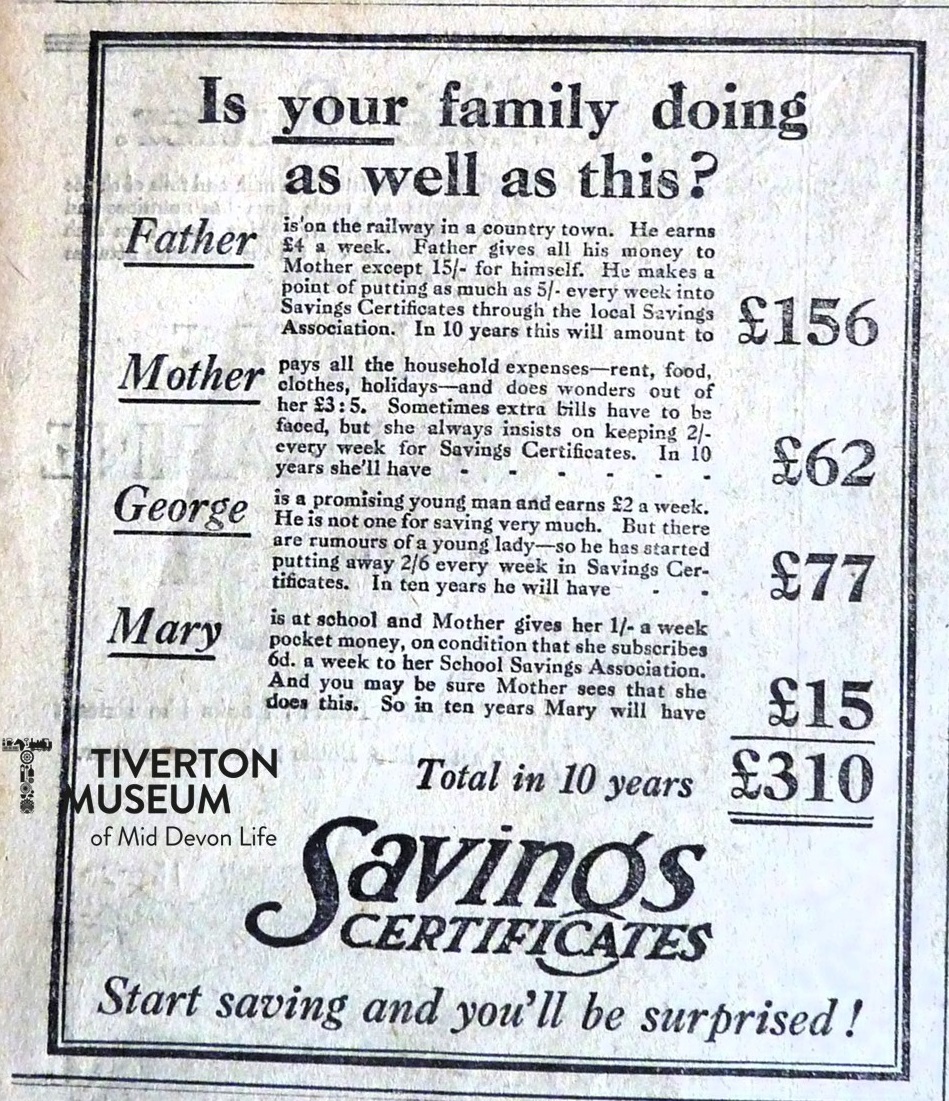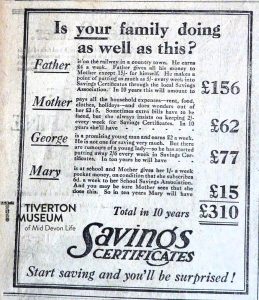
Newspaper cutting about Savings Certificates
If you read the text of this advert for Savings Certificates, it gives a very good idea of family life in 1924. If the family kept to its savings plan, the £310 it would have saved by 1934 is equivalent to just under £28,000 today.
A search of the Museum catalogue reveals 16 money boxes, they are of various shapes and sizes and are often promotional items for savings institutions.
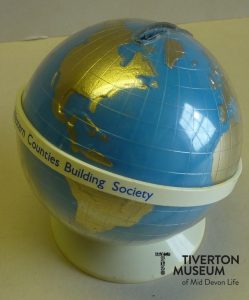
This was a money box from the Western Counties Building Society. Established in 1858, its headquarters were in Bideford. In 1985, it became the West of England Building Society and eventually became a part of Nationwide. The box was made by a Finnish company who are still producing money boxes today.
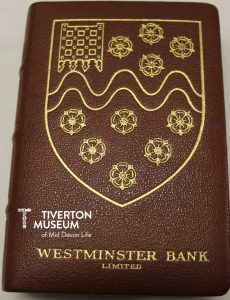
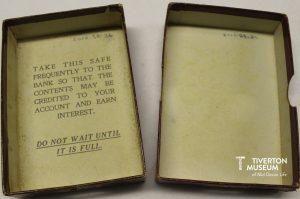
The bank, which is NatWest today, can trace its origins back to 1836. During the 19th century, it acquired many smaller, privately run banks mainly in and around London. In the early 20th century it was known as the London County and Westminster Bank. It became the National Westminster after a merger with the National Provincial Bank in 1970. The metal money box has a slot for coins and a hole for notes and is enclosed in a leather box – the base of the box reveals a message for the saver!
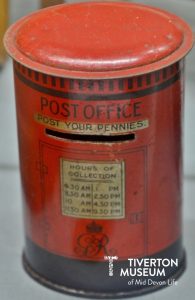
The date of this post box money box is not known but the Royal ‘cipher’ is for George V who reigned from 1910-1936. On the back is a list of the pre-decimal coins.
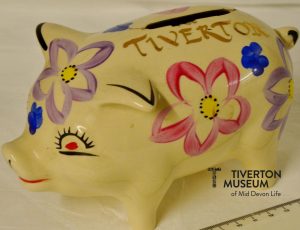
A colourful souvenir of Tiverton, this money box was made by Arthur Wood. They were operating at Longport in the Potteries between 1928 and 1954, although after merging with other companies production continued until 2003.
Museum Volunteer, Sue B

